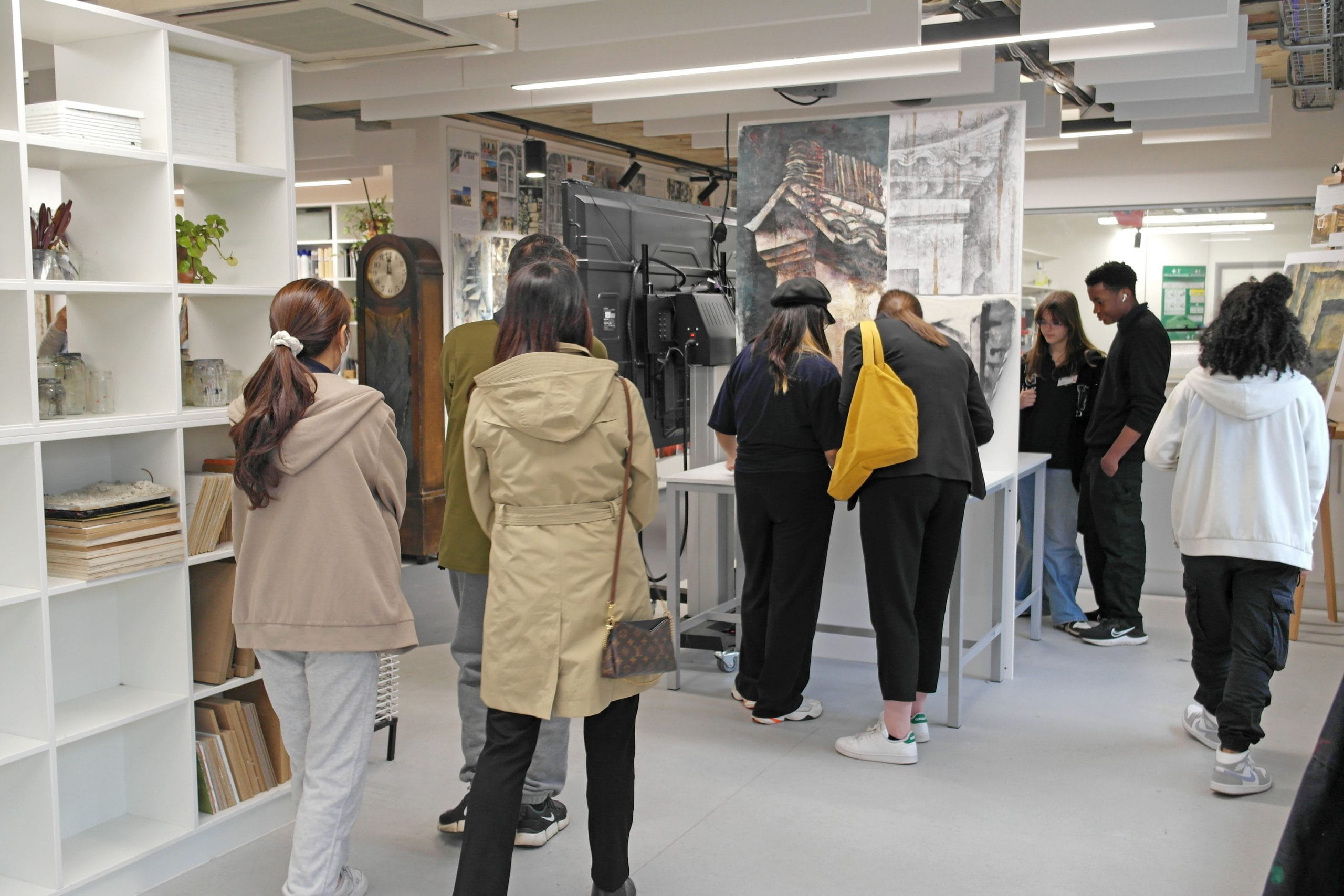We use cookies to improve your online experiences. To learn more and choose your cookies options, please refer to our cookie policy.

Art Technician Sean Synnuck on the left with Head of Art at The International School Kamar Finn on the right
On 9 June we hosted a special event, our very first Art Exhibition of International Students’ work in our d’Overbroeck’s Arts Centre! The event was held in the evening and was extremely well-attended, packed with students and staff from across the d’Overbroeck’s sites who were keen to see the work on display. Word of mouth had even spread through Oxford, bringing in some visitors with no prior connection to our School!
We also welcomed other special guests such as Graham Witte, Director of Health and Safety from Nord Anglia Education and the project manager for the renovation of the Arts Centre. Since becoming part of the Nord Anglia Education family last year, d'Overbroeck’s is delighted to be able to share our work with NAE colleagues.
Artwork was covering almost every inch of the walls in the bright and airy exhibition room, with additional displays put up in the Centre especially for the event. Subject portfolio books were also laid out on tables near bigger pieces so that attendees could flick through and find out more about how each student’s project had developed, additional context such as the story behind the piece, more about the location they chose, and the student’s thought process.
The exhibition work was created by Year 11 students at The International School, who had been given the theme of ‘Wounded Landscapes’, with a view to exploring what they consider this to be with regards to their own countries of origin. The project was loosely themed to allow students to interpret the project name in a variety of ways and with a certain place in mind, such as a village, town, or city with particular significance to them. The ‘wounded landscapes’ could therefore apply to a literal place, such as marks or damage to physical structures or landscapes, or be metaphorical. They also did not have to be limited to a certain period of time.
Part of the students’ initial brief for the project stated, ‘Wounded Landscapes is about processes. Processes of making, scarring, destruction, deteriorating and crumbling. These may be from natural or man-made causes.’ This then followed with a list of options as starting points within two broad categories of Architecture and Urban, and Nature. Architecture and Urban included reference points such as Urban Decay, Materials and Corrosion, Derelict, Under Construction, War, Refugees, COVID-19, and Homeless. The Nature category included the starting points Withering Forms, Plastic Landscapes, Natural Disasters, and Fantasy Post-Apocalypse. Artists who served as an inspiration for some of the students’ projects include Sonja Bittlinger, Jeff Dixon, Lucy Shires, Marion Birkholz, Pat Steir, Russ Martin, Christian Hetzel, Grace Bentley-Scheck Collagraphy, Valery Kshlyakov, Ian Murphy, Joshua Smith, Mark Dion, Matt Emmett, Niki Feijen, Ahmed Badr / Mohamad Hafez, Matteo Massagrande, Evan Chang, Andy Goldsworthy, Debbie Smyth, Frank de Block, Jon Blumenaus, Steiner Otto, Anselm Kiefer, Paul Nash, William Kentridge, Doris Salcedo, Isabel and Alfredo Aquizilan, Skid Robot, Paul Lindsay-Jones who transformed the disabled spot in Truro into his home, Rachel Whiteread, Valery Koshlyakov, Evol, Pamela Sullivan, Isabel and Alfredo Aquizilan, Keith Dotson, Emil Yanos, Valery Hegarty, Tomoya Matsuura, Okuda Kodo, Karen Lane, Jennifer Bright, Inaba Chikako, Heiki Leis, and many more.
Students at The International School come from all over the world to study with us, so a project with interpretive freedom around the landscape and what can be considered a ‘wound’ gave the students ample room to delve into something that particularly stood out to them; that could be anything from a large-scale, internationally-significant area with a theme quickly recognisable to many in the U.K now, or a local wounded landscape with a story that has primarily affected a small community, known to fewer people, but still with a deep impact. The d’Overbroeck’s Arts Centre is extremely well designed and fitted out to encourage process-driven work in a variety of mediums. Even though the Arts Centre was only opened in 2021, artwork in the exhibition showed how students were able to use their creativity to work with mixed media and unfamiliar processes to achieve certain outcomes. Materials included in the artworks ranged from wire, wood, glass, cement and paint to tree branches and an actual clock. Many people who attended were able to get up-close to the pieces and see the layers of materials that were used to create the overall effect. Although we have put on other exhibitions at a smaller scale, we hope that this will be the first of many exhibitions in the d’Overbroeck’s Arts Centre.